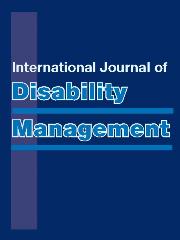Article contents
Supports and Impediments on the Way to Occupation, Employment and Workplace Integration for People With Cognitive Disabilities
Published online by Cambridge University Press: 16 November 2017
Abstract
Purpose: This article focuses on occupation and employment after basic vocational training for people with cognitive disabilities. The aim is to reveal supporting and hindering factors of different forms of workplace integration as perceived by those with disabilities. Method: Both quantitative and qualitative methods were used, consisting of an easy-to-read questionnaire completed by 412 graduates of practical vocational training, and in-depth interviews with 27 graduates. Results: The key findings show that workplace integration of people with disabilities takes place through a combination of various factors and materialises in different ways in terms of workplace, employment status, activity and further perspectives. Our findings suggest that supporting and accompanying people with disabilities in their work activities should always take into account both their desire for self-determination and their dependence on structural conditions.
Keywords
- Type
- Articles
- Information
- Copyright
- Copyright © The Author(s) 2017
References
- 3
- Cited by


